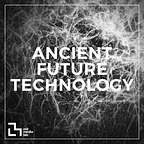[AFT Fall ’21] What Ancient Future Technology Means to Me
By Christianna Bennett
“Ancient future technology” implies, to me, that technologies of the past, specifically indigenous technologies — and their related systems of collaboration, construction, and imagination — are perhaps “more advanced” or more significant than history has provided credit for. In many cases ancient technologies have not been given recognition due to prejudiced racial, colonial or imperial-driven biases, often produced by and reinforced by Western epistemological systems.
Of particular interest to me is the idea that there exist many centuries-old technologies and landscape practices that have been reiterated upon for hundreds of generations and thousands of years. There are many significant forms of embedded intelligence, tacit knowledge, and sophisticated systems of balance, feedback, and reciprocity exemplified in long-lasting cultural systems and technologies. These technologies are, furthermore, fascinating due to the fact they have been given so many years and many generations to emerge and persist. In fact, their persistence and resiliency is often due to their long-lasting existence and ability to calibrate to changes over long spans of time.
The concept — of a technology that requires longevity — then arrives as an affront to Westernized concepts of technology, which have come to imply something new, fast, and immediately impactful or useful. I find the ancient, multi-generational systems very meaningful and unfortunately misunderstood, or simply under-appreciated, undervalued, and unrecognized for their contributions to humanity, wisdom, and the planet.
Christianna Bennett is a landscapist, urbanist, writer, and instructor in architecture. Her interests include ecology, ethics, biomaterials and material hybrids, experimental horticulture, and the history and philosophy of science, technology, and design.
